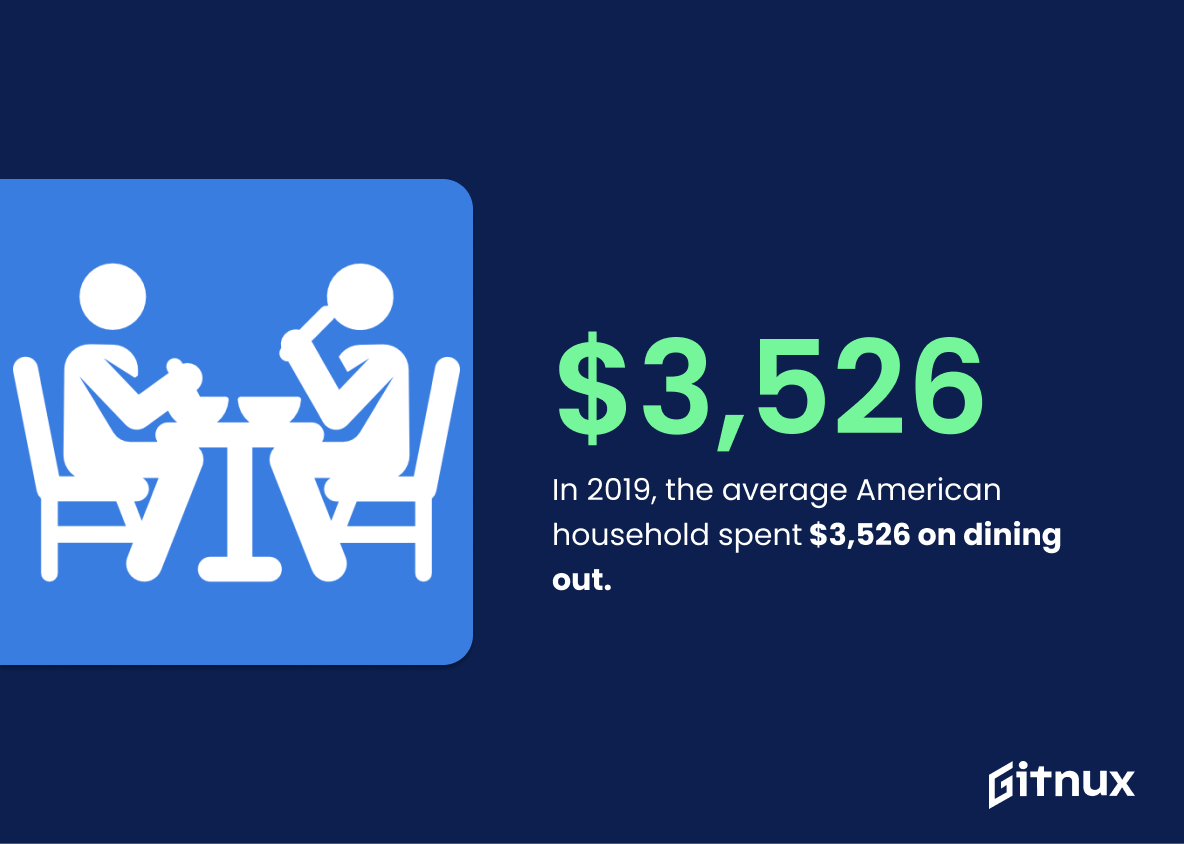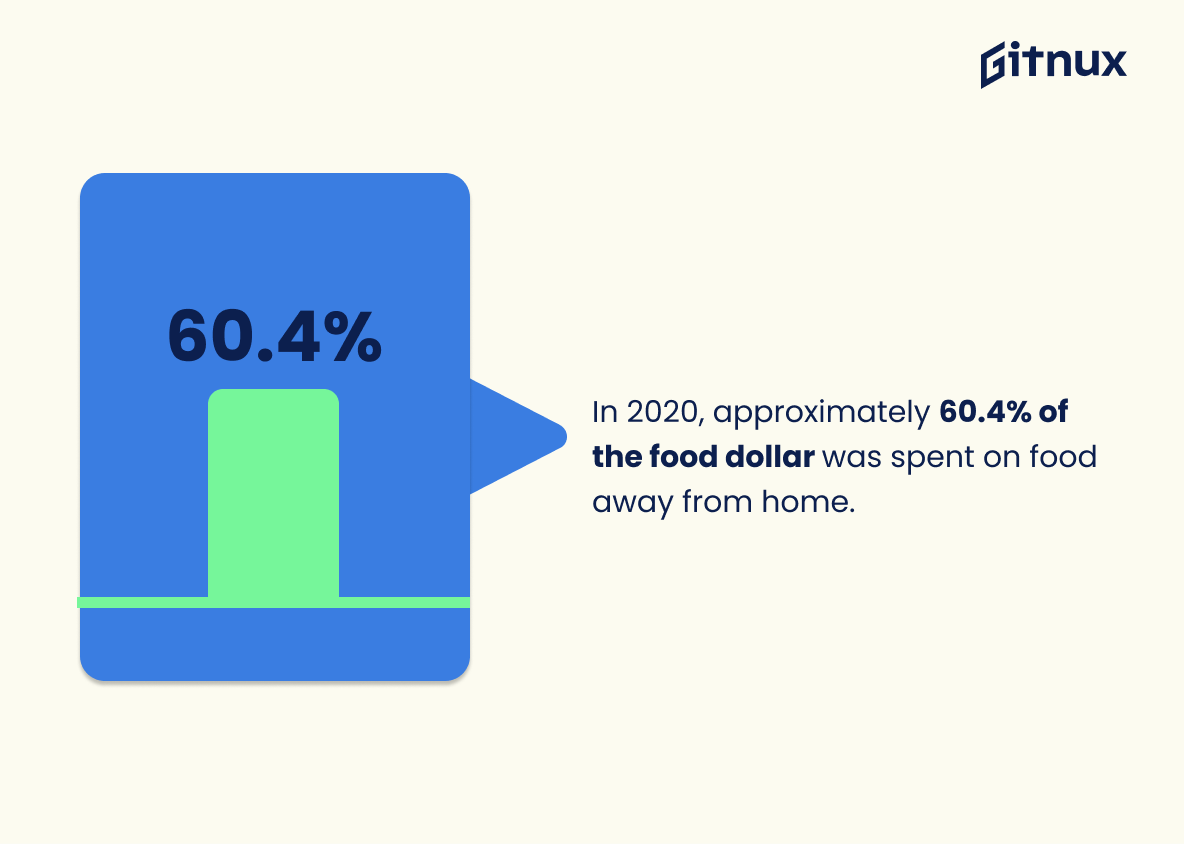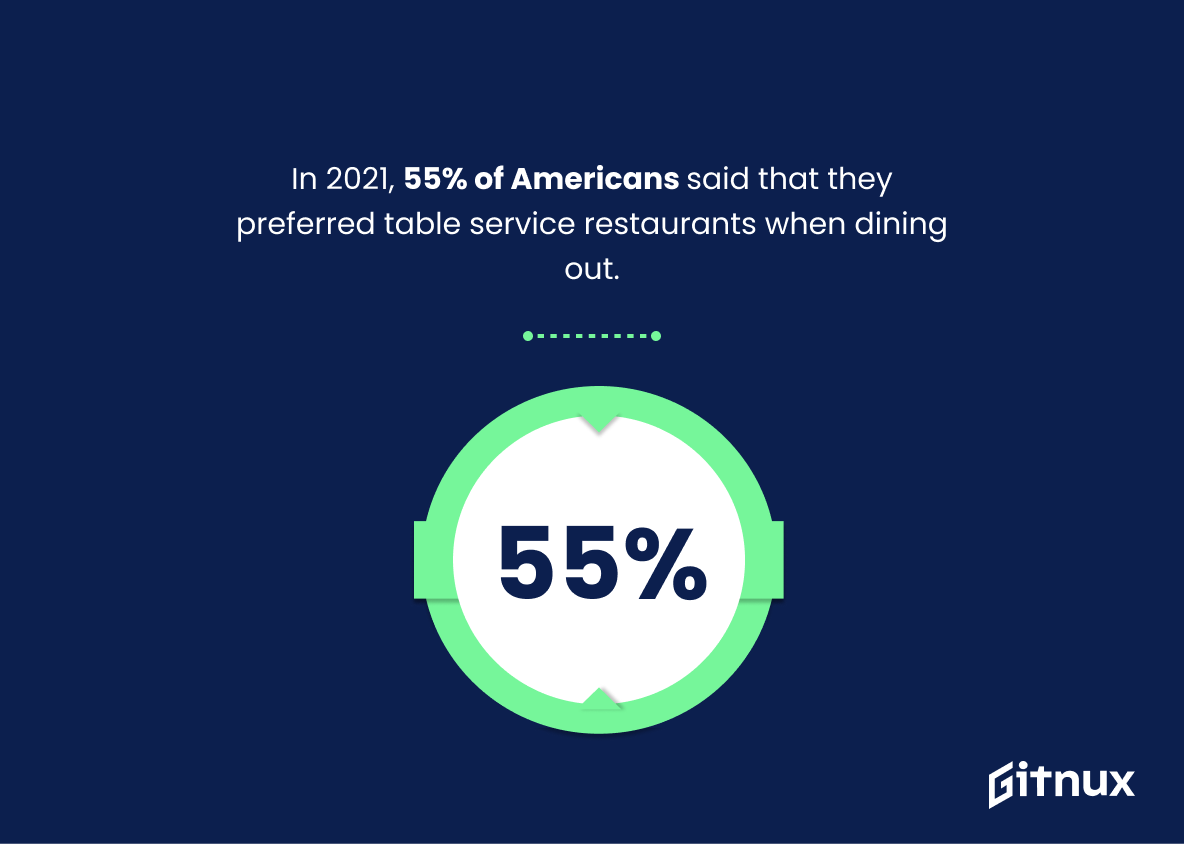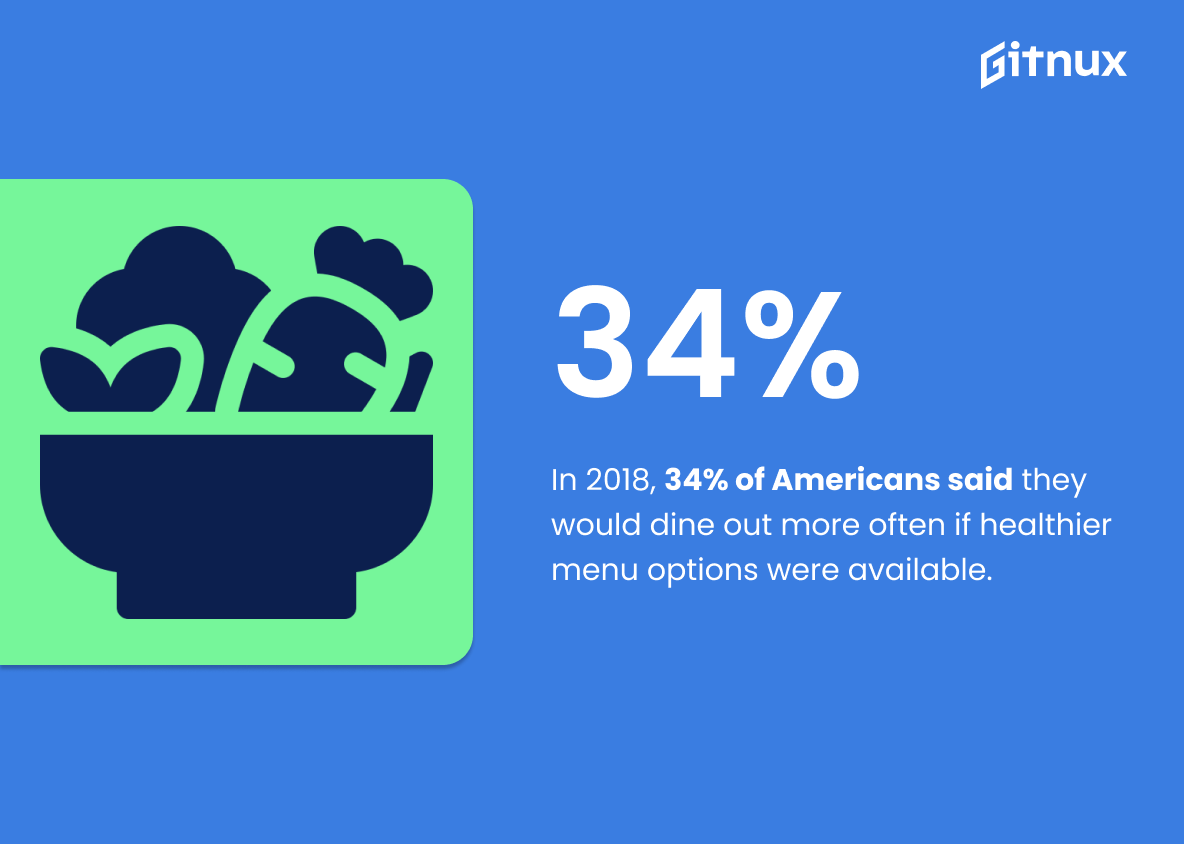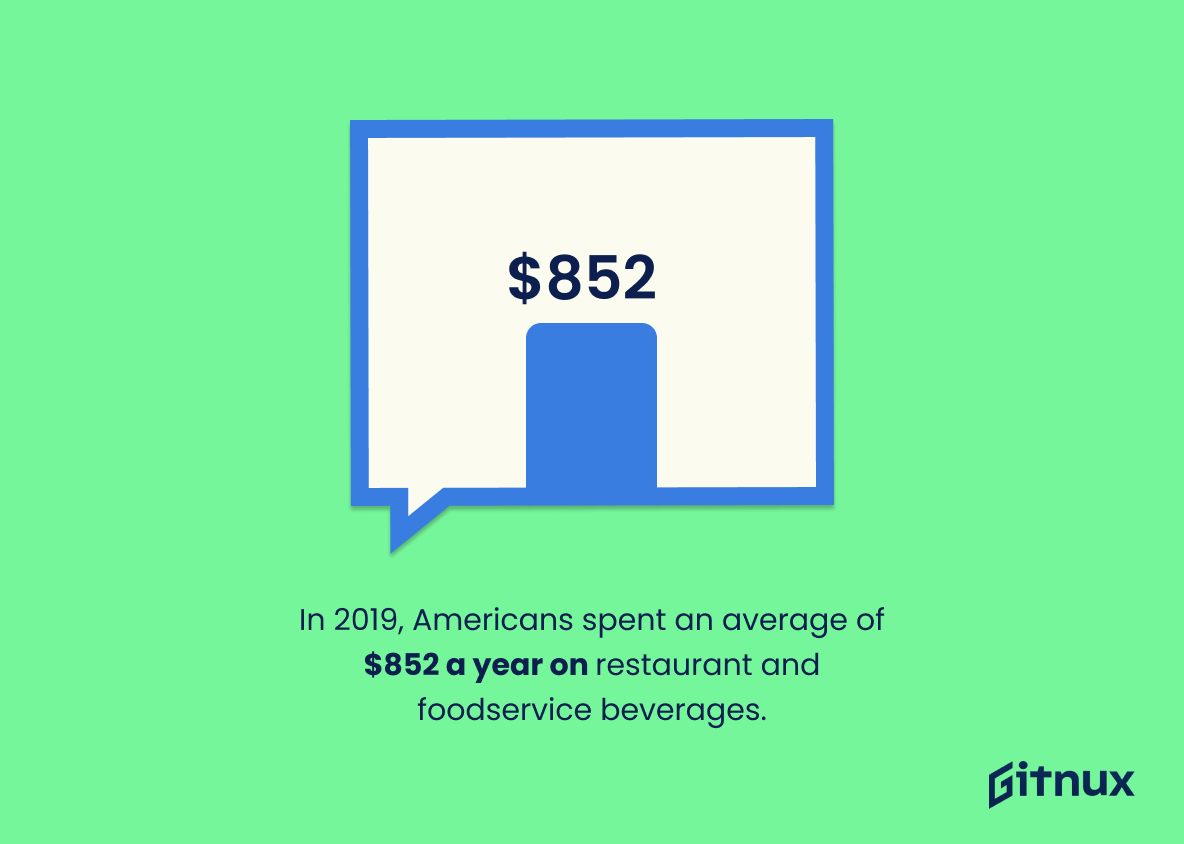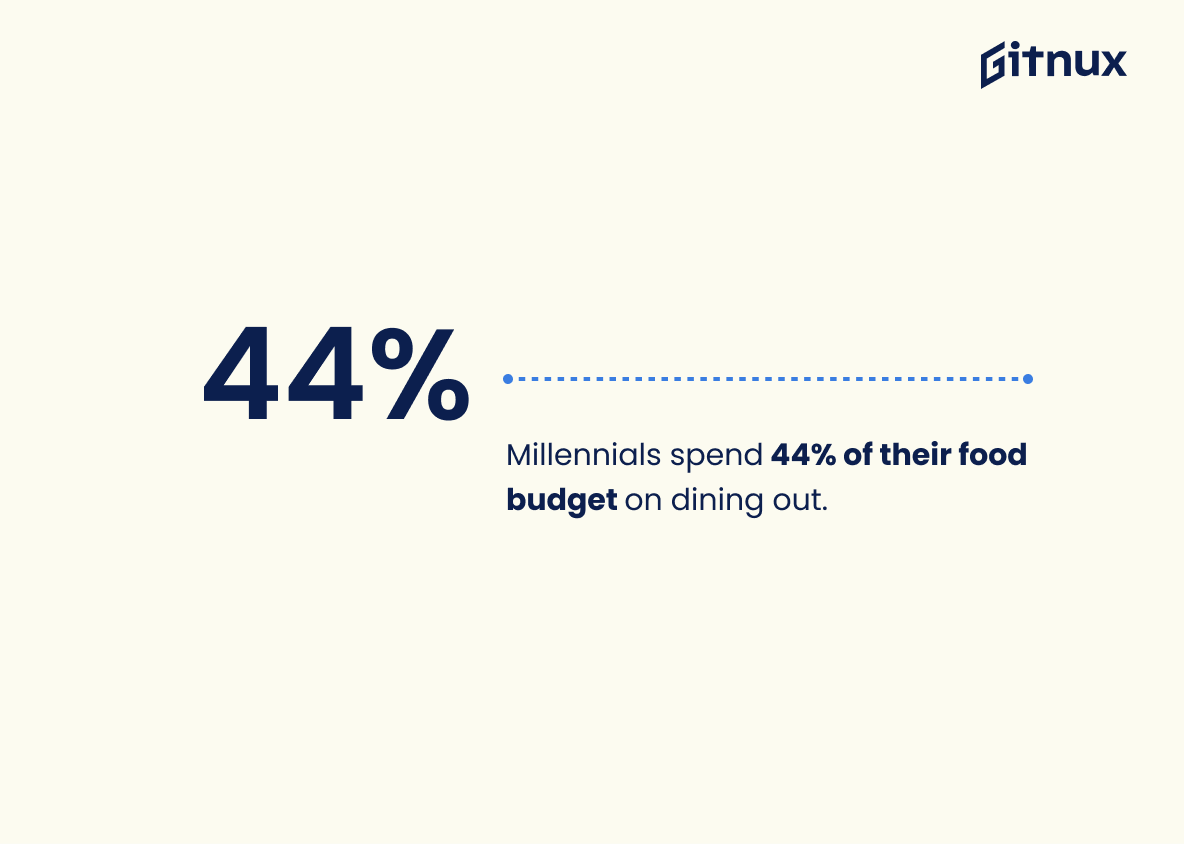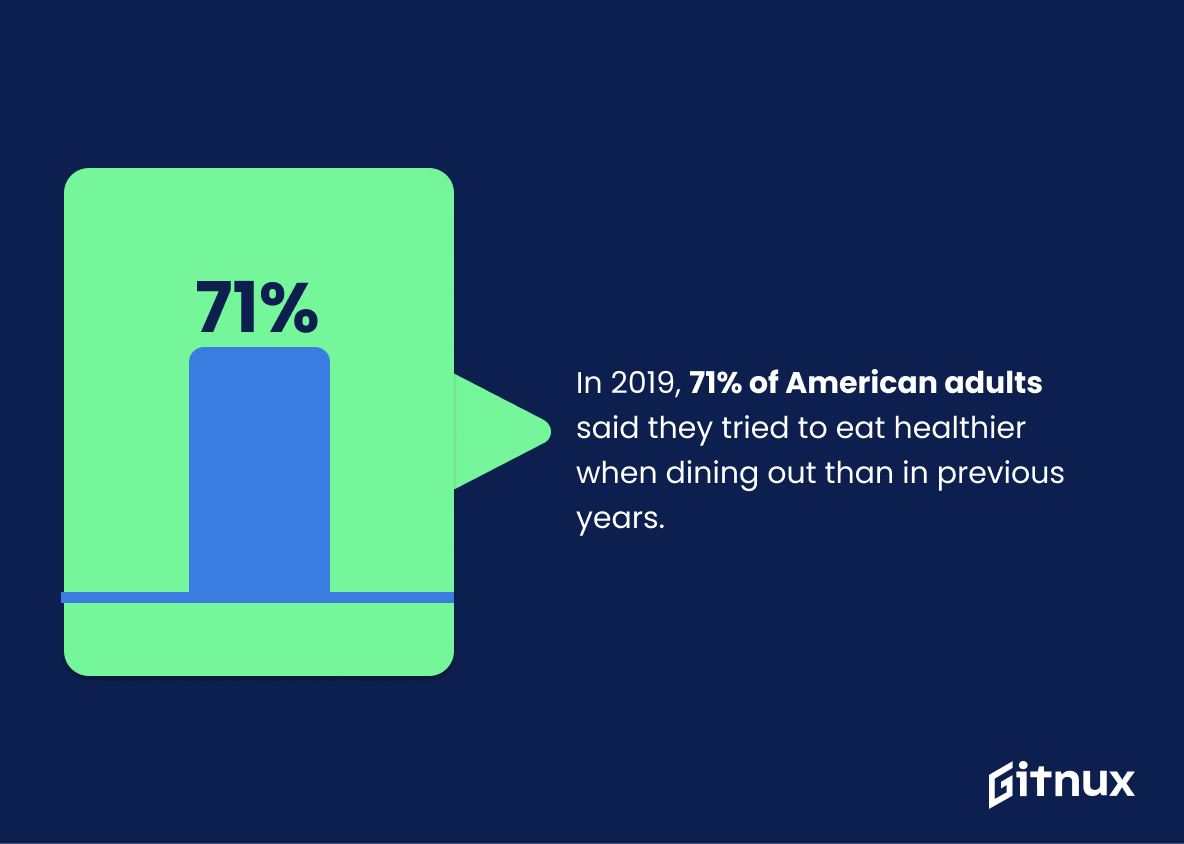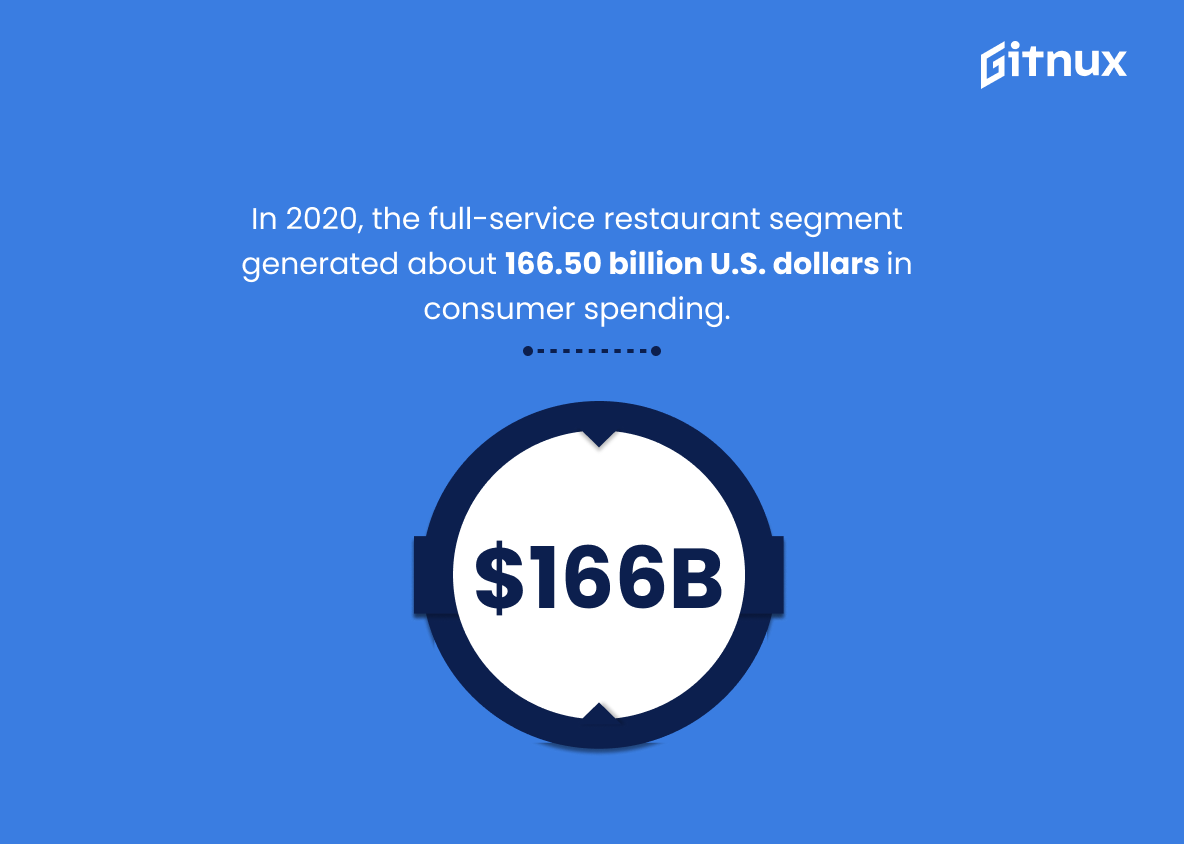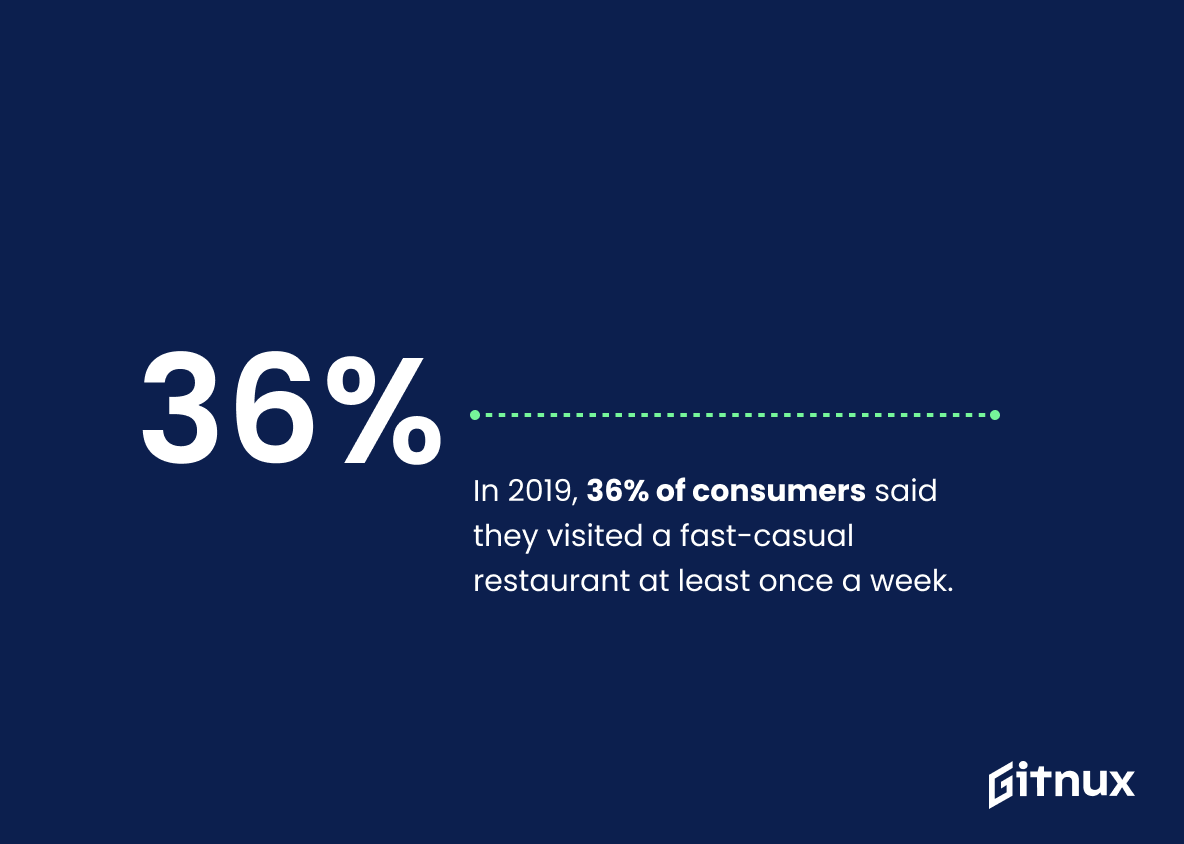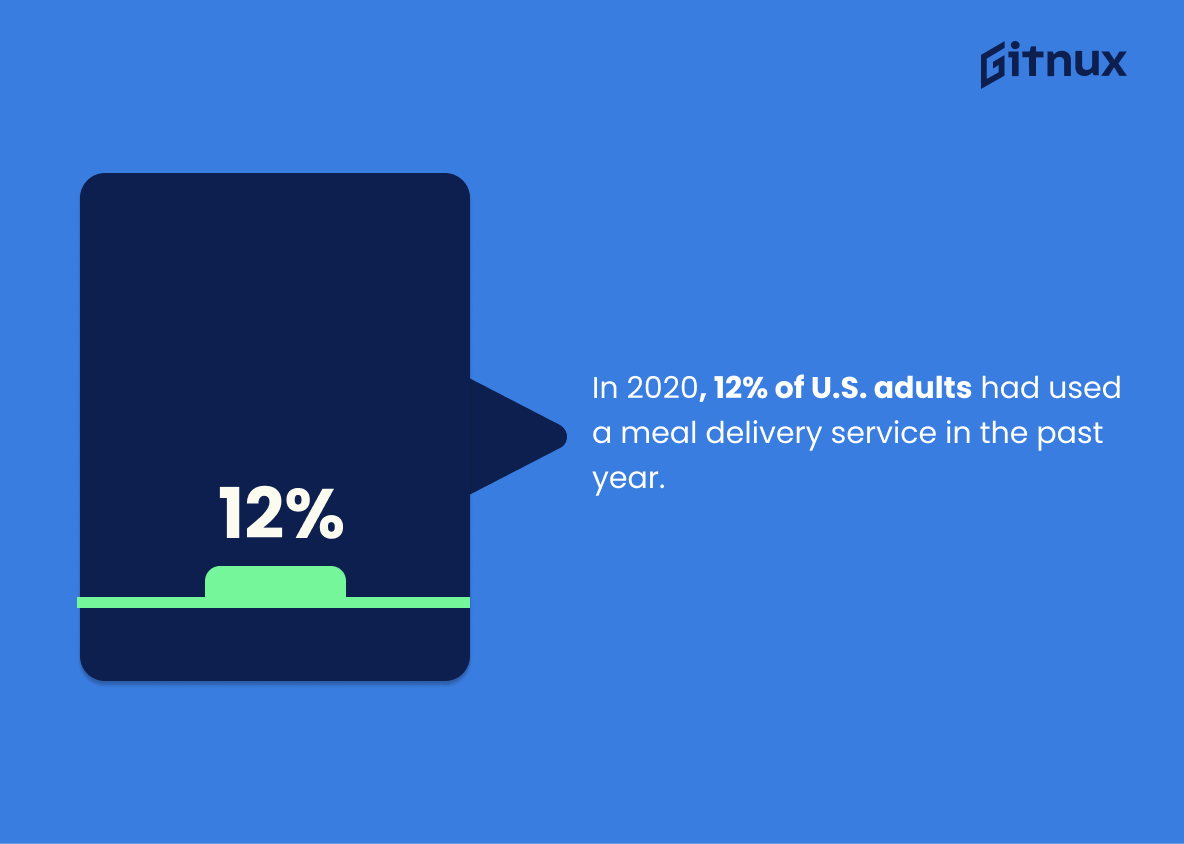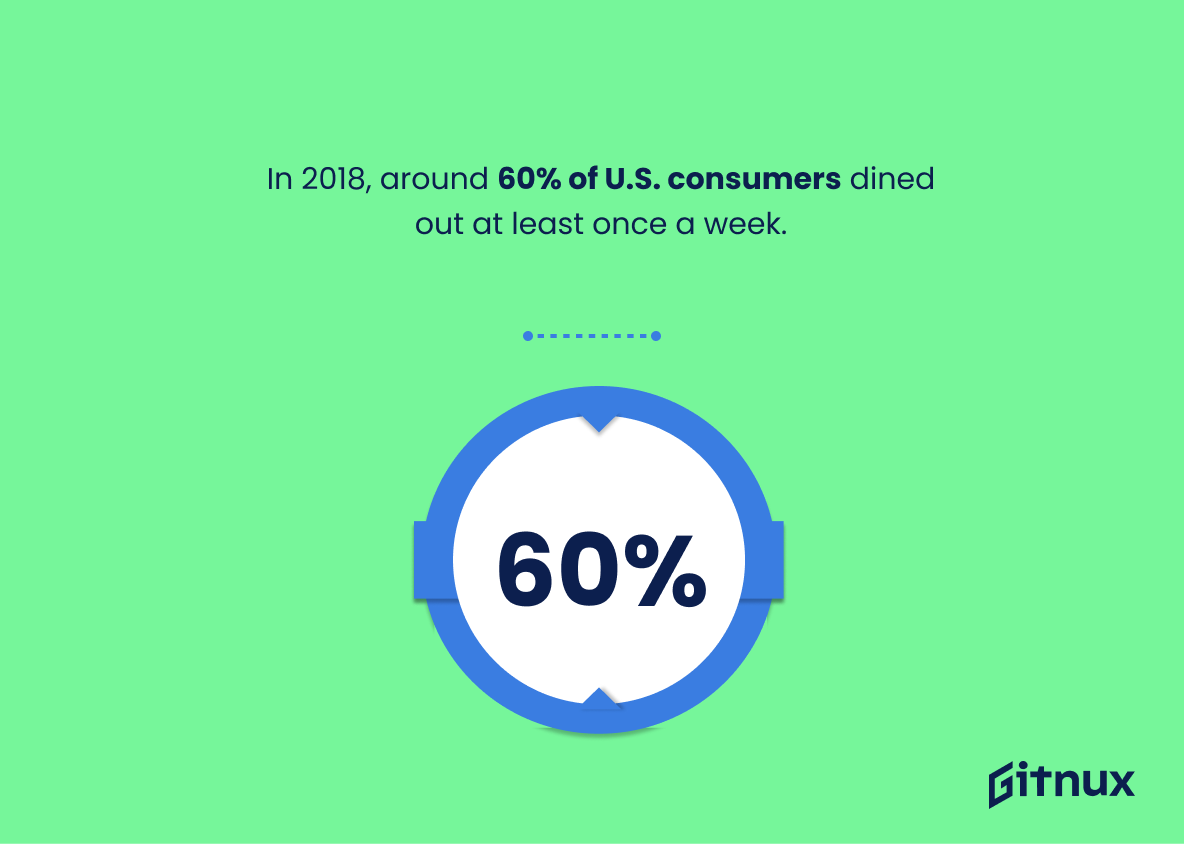Dining out is an important part of the American lifestyle. According to Statista, in 2020 the food service industry generated approximately 243 billion U.S. dollars, a decline from 298 billion in 2019. Additionally, 8.1 million people were employed in this sector and average households spent $3,526 on dining out that year alone. Furthermore, there are currently 660,755 restaurants across America with 54 percent of Americans eating out at least three times a week according to OnePoll US research data from 2019.
Moreover 60% of all food spending was for meals away from home while 55% preferred table service restaurants when dining out as per 2021 statistics by Statista survey results . In addition 62% restaurant meals were ordered for off-premise takeout or delivery services last year according to Technomic’s study findings and 34 % said they would dine more often if healthier menu options were available (Gallup Poll). Beverages consumed outside homes accounted for $852 annually on average as reported by BLS news release whereas Millennials spend 44 % their total budget on such activities (Bureau Of Labor Statistics report). 71 % adults tried to eat healthy when going outside compared previous years(NPD Group) and 166 Billion USD consumer spending was recorded full-service segment during same period(Statista). Limited Service Restaurants excluding bars earned 251 Billion USD revenue meanwhile 70 percent consumers prefer independent/local establishments over chain ones (AT&T Business Direct article ). 36 Percent visited fast casual outlets weekly & 12 percent used meal delivery services past one year respectively based upon surveys conducted recently.(Pew Research Center & Statista ) Finally 79percent millennials went outside once every seven days which makes them largest generation among restaurant goers says Upserve’s Restaurant Market Industry Report .
Dining Out Statistics Overview
In 2019, the average American household spent $3,526 on dining out.
This statistic is a telling indication of the importance of dining out in the lives of the average American household. It shows that, despite the cost, Americans are still willing to invest in the experience of dining out, whether it be for a special occasion or just a night out with friends. This statistic is a valuable insight into the habits of American households and can be used to inform decisions about the dining out industry.
As of 2021, there are approximately 660,755 restaurants in the United States.
This statistic is a testament to the sheer magnitude of the restaurant industry in the United States. It speaks to the sheer number of establishments that are available to the public for dining out, and the sheer variety of cuisines and experiences that can be found in the country. It is a powerful reminder of the importance of the restaurant industry in the US economy, and the impact it has on the lives of millions of people.
In 2019, 54 percent of Americans eat out at least three times a week.
This statistic is a telling indication of the prevalence of dining out in the United States. It shows that a majority of Americans are choosing to eat out at least three times a week, which speaks to the popularity of restaurants and the convenience of eating out. This statistic is important to consider when discussing dining out statistics, as it provides insight into the habits of Americans when it comes to food.
In 2020, approximately 60.4% of the food dollar was spent on food away from home.
This statistic is a telling indication of the current state of dining out. It shows that a majority of the food dollar is being spent on food away from home, indicating that people are increasingly choosing to eat out rather than prepare meals at home. This statistic is a valuable insight into the current trends in dining out and can be used to inform decisions about the restaurant industry.
In 2021, 55% of Americans said that they preferred table service restaurants when dining out.
This statistic is a telling indication of the current state of dining out in America. It shows that the majority of Americans are still opting for table service restaurants when they go out to eat, despite the pandemic and the rise of takeout and delivery options. This statistic is important for understanding the preferences of the American public and how they are adapting to the changing landscape of dining out.
As of 2020, 62% of restaurant meals were ordered for off-premise dining or takeout.
This statistic is a telling indication of the current state of the restaurant industry. It shows that the majority of restaurant meals are now being ordered for takeout or off-premise dining, which is a stark contrast to the traditional in-restaurant dining experience. This shift in consumer behavior has had a significant impact on the restaurant industry, and it is important to understand the implications of this statistic in order to gain a better understanding of the current state of the industry.
In 2018, 34% of Americans said they would dine out more often if healthier menu options were available.
This statistic is a clear indication that Americans are increasingly conscious of their health and are looking for healthier options when dining out. This is an important factor to consider when discussing dining out statistics, as it shows that people are willing to make changes to their eating habits if healthier options are available.
In 2019, Americans spent an average of $852 annually on beverages in restaurants and other foodservice establishments.
This statistic is a telling indication of the amount of money Americans are willing to spend on beverages when dining out. It speaks to the importance of beverages in the restaurant experience, and how much of an impact they can have on the overall cost of a meal. It also provides insight into the financial impact of the restaurant industry on the American economy.
Millennials spend 44% of their food budget on dining out.
This statistic is a telling indication of the dining habits of Millennials, highlighting the fact that they are more likely to spend a significant portion of their food budget on dining out. This is an important piece of information for a blog post about Dining Out Statistics, as it provides insight into the preferences of this generation and how they are impacting the restaurant industry.
In 2019, 71% of American adults said they tried to eat healthier when dining out than in previous years.
This statistic is indicative of a larger trend in the American dining scene: people are increasingly conscious of their health when eating out. This shift in attitude is likely due to the growing awareness of the importance of healthy eating, and it has implications for restaurants and other food service providers. For example, restaurants may need to adjust their menus to accommodate the health-conscious consumer, or they may need to provide more information about the nutritional content of their dishes. This statistic is a valuable insight into the changing landscape of dining out, and it is an important factor to consider when discussing dining out statistics.
In 2020, the full-service restaurant segment generated about 166.50 billion U.S. dollars in consumer spending.
This statistic is a powerful indicator of the immense impact the full-service restaurant segment has had on the economy in 2020. It speaks to the immense popularity of dining out and the amount of money consumers are willing to spend on it. This statistic is a testament to the strength of the restaurant industry and its ability to weather the storm of the pandemic.
In 2020, consumer spending in the limited-service restaurant segment (excluding bars) reached nearly 251 billion U.S. dollars.
This statistic is a testament to the immense popularity of the limited-service restaurant segment, which has seen a steady rise in consumer spending over the years. It is a clear indication that people are increasingly opting for dining out experiences, which is a trend that is likely to continue in the future. This statistic is thus an important one to consider when discussing dining out statistics, as it provides insight into the current state of the industry.
In 2019, 30.6% of family food spending was for food-away-from-home.
This statistic is a telling indication of the prevalence of dining out in 2019. It shows that a significant portion of family food spending was devoted to food-away-from-home, suggesting that dining out is a popular activity for many families. This statistic is important to consider when discussing dining out statistics, as it provides insight into the frequency of dining out and the amount of money spent on it.
In 2019, 36% of consumers said they visited a fast-casual restaurant at least once a week.
This statistic is indicative of the growing popularity of fast-casual restaurants, showing that a large portion of consumers are frequenting these establishments on a weekly basis. This is an important piece of information to consider when discussing dining out statistics, as it demonstrates the impact that fast-casual restaurants have had on the industry.
In 2020, 12% of U.S. adults had used a meal delivery service in the past year.
This statistic is indicative of the changing landscape of dining out in the U.S. With the rise of meal delivery services, it is clear that more and more people are opting for convenience over traditional dining out experiences. This shift in consumer behavior has implications for the restaurant industry, as well as for the meal delivery services themselves.
In 2018, around 60% of U.S. consumers dined out at least once a week.
This statistic is a telling indication of the prevalence of dining out in the United States. It shows that the majority of consumers are taking advantage of the convenience and variety of dining out options available to them. This statistic is important to consider when discussing dining out statistics, as it provides insight into the habits of U.S. consumers and the impact that dining out has on the economy.
In 2019, Millennials made up the largest generation of restaurant-goers, with 79% dining out in the past year.
This statistic is significant in the context of dining out statistics because it highlights the importance of Millennials as a key demographic for restaurants. It shows that Millennials are the most active generation when it comes to dining out, and that restaurants should be targeting this group in order to maximize their profits.
Conclusion
The statistics presented in this blog post demonstrate that dining out is a popular activity among Americans, with many people eating out at least once a week. The food service industry generated approximately 243 billion U.S. dollars in 2020 and employed 8.1 million people, while the average American household spent $3,526 on dining out in 2019 alone. There are currently 660,755 restaurants across the United States and 54 percent of Americans eat out at least three times a week according to one poll survey from 2019. Additionally, 60% of all food spending was for meals away from home last year and 55% prefer table service when they dine out today; 62% order their restaurant meals for takeout or off-premise dining as well as 34% wanting healthier menu options if available when deciding where to eat; Millennials spend 44% of their food budget on going to restaurants; 71 % try to make healthier choices than before when eating outside the house; 166 billion US Dollars were spent by consumers on full-service restaurants whereas 251 billions went into limited services (excluding bars); 36 % visit fast casual establishments weekly and 12 % used meal delivery services during 2020 – showing how much convenience matters nowadays too. All these facts point towards an ever growing trend: Dining Out has become more important than ever before.
References
0. – https://www.bls.gov
1. – https://www.technomic.com
2. – https://www.ers.usda.gov
3. – https://www.pewresearch.org
4. – https://www.statista.com
5. – https://www.nrn.com
6. – https://www.onepoll.us
7. – https://www.gallup.com
8. – https://www.upserve.com
9. – https://www.restaurant.org
10. – https://www.npd.com
